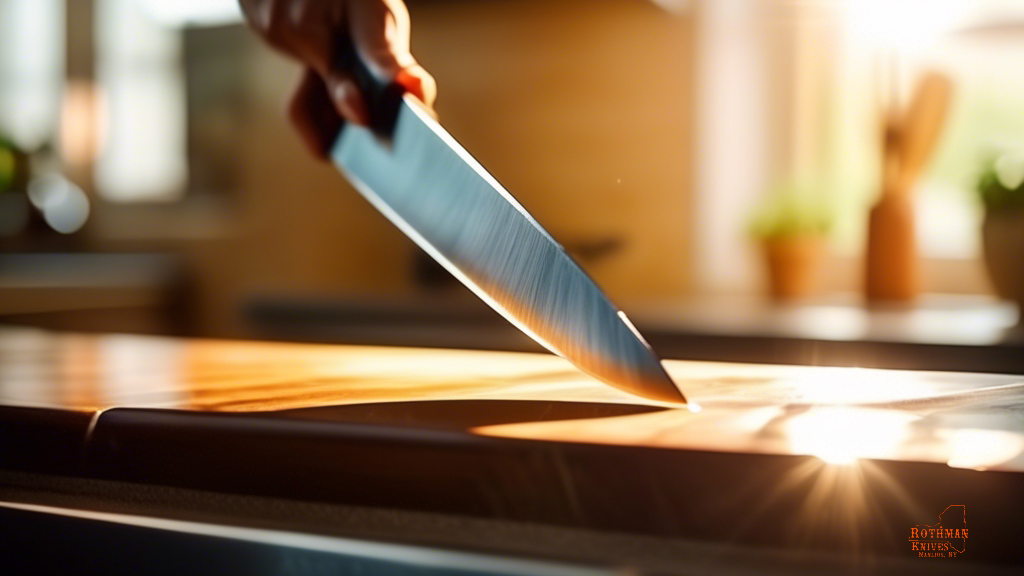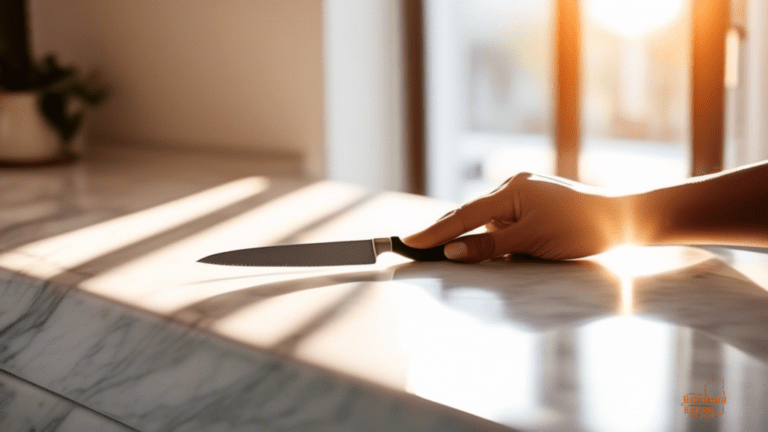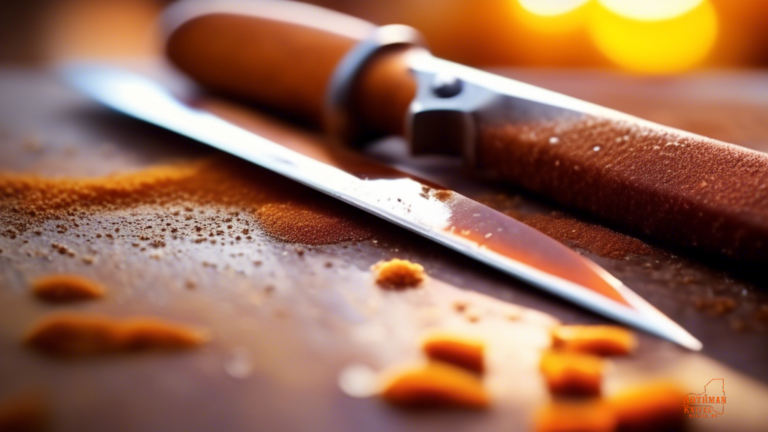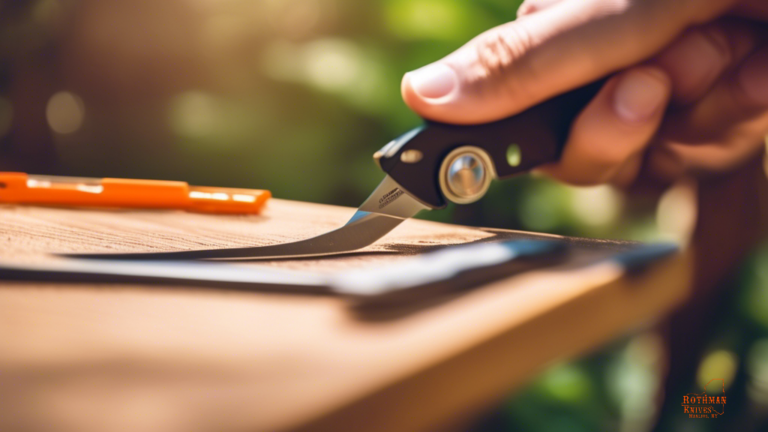Mastering The Knife Sharpening Basics
by Mike Rothman · September 6, 2024
Discover the secrets to mastering knife sharpening basics and elevate your culinary game! Our comprehensive guide will teach you everything you need to know to keep your blades razor-sharp. Say goodbye to dull knives and hello to precision cuts – click now to upgrade your kitchen skills!
Are you tired of struggling with dull knives in the kitchen? Mastering the basics of knife sharpening can not only make your cooking experience more enjoyable but also improve the safety and efficiency of your cutting tasks.
By understanding the different types of sharpening tools available and learning the proper techniques for sharpening your knives, you can ensure that your blades are always ready for any culinary challenge.
In this article, we will guide you through the essential steps to sharpening your knives like a pro. From choosing the right sharpening stone to avoiding common mistakes, we will provide you with the knowledge and skills needed to maintain the sharpness of your blades.
So, grab your knives and get ready to elevate your cooking game with sharp, precise cuts!
Understanding Different Types of Knife Sharpening Tools
Now that you’ve mastered the basics of knife sharpening, let’s dive into the different types of tools you can use to keep your blades sharp and ready for action.
One popular option is the sharpening stone, which comes in various grit levels to cater to different sharpening needs. Whether you prefer a fine finish or a more aggressive sharpening, there’s a sharpening stone out there for you.
Another common tool is the honing rod, which is great for maintaining the sharpness of your blade in between sharpening sessions. It’s a quick and easy way to keep your knife in top condition.
If you’re looking for a more convenient option, electric knife sharpeners are a popular choice. These tools are easy to use and can quickly sharpen your knives with minimal effort. However, some purists argue that electric sharpeners can be too aggressive and may remove too much metal from your blade.
Whichever tool you choose, make sure to practice proper technique and follow the instructions carefully to ensure your knives stay sharp and ready for any task. Remember, the key to mastering knife sharpening is finding the right tool that works best for you and your blades.
Proper Technique for Sharpening a Knife
To sharpen a knife properly, you should hold the blade at a consistent angle while moving it along the sharpening stone. Finding that perfect angle might take some practice, but once you’ve got the hang of it, you’ll be slicing through ingredients like a pro.
Remember, it’s all about maintaining that steady motion and pressure to achieve a sharp edge that will make your kitchen tasks a breeze.
As you sharpen your knife, think of it as a ritual, a moment where you connect with the age-old tradition of caring for your tools. Embrace the satisfying sound of the blade meeting the stone, knowing that with each stroke, you’re honing your skills and your knife’s sharpness.
Sharpening a knife is not just a task, it’s a way to bond with your kitchen essentials and be part of a community that values the art of cooking.
Maintaining the Sharpness of Your Knife
Maintain the sharpness of your knife by regularly honing it with a sharpening steel. This simple practice will help ensure that your knife performs at its best.
Here are a few tips to help you keep your knife sharp and ready for any cutting task:
- Make honing a part of your routine to maintain the edge of your knife.
- Store your knife in a knife block or on a magnetic strip to prevent the blade from getting dull due to contact with other objects.
- Avoid cutting on hard surfaces like glass or granite, as it can dull your knife quickly. Use a cutting board instead.
- Clean your knife with warm, soapy water after use and dry it immediately to prevent rust and maintain its sharpness.
By following these simple tips, you can ensure that your knife stays sharp and ready for any culinary challenge that comes your way.
Common Mistakes to Avoid When Sharpening Knives
Make sure you’re not making these common mistakes when you sharpen your knives – are you unintentionally damaging the blade by using the wrong angle or too much pressure? One of the most common mistakes people make is not maintaining a consistent angle while sharpening. If you vary the angle as you sharpen, you’ll end up with an uneven edge that won’t cut effectively. Another mistake to watch out for is applying too much pressure. Pressing down too hard on the knife while sharpening can actually cause more harm than good, as it can lead to unnecessary wear on the blade.
Here is a helpful table to guide you on common mistakes to avoid when sharpening your knives:
| Mistake | Description |
|---|---|
| Inconsistent angle | Maintain a steady angle to ensure an even edge. |
| Applying too much pressure | Use gentle pressure to avoid unnecessary wear on the blade. |
| Not using the right sharpening tool | Choose the appropriate sharpening tool for your knife. |
| Over-sharpening | Sharpen your knife as needed, over-sharpening can damage the blade. |
| Neglecting to hone the blade | Regularly hone your knife to maintain its sharpness. |
Tips for Choosing the Right Sharpening Stone
When selecting the appropriate sharpening stone, it’s essential to consider the grit size and material for optimal results.
The grit size determines how coarse or fine the stone is, with lower grit numbers being coarser and higher numbers finer. If you have a very dull knife, start with a lower grit to reshape the edge, then move to a higher grit for polishing.
Additionally, the material of the stone can vary from natural stones like Arkansas or synthetic options like diamond stones. Each material has its advantages, so choose based on your needs and preferences.
You want to feel confident in your choice of sharpening stone, knowing it will help you achieve the perfect edge on your knives.
Remember, the right stone can make all the difference in maintaining your blades. Take the time to research and find the best fit for you, whether you’re a beginner or a seasoned pro.
Your knives will thank you for it with precision cuts and long-lasting sharpness.
Frequently Asked Questions
Can you sharpen serrated knives with the same tools and techniques as regular knives?
You can’t use the same tools and techniques for sharpening serrated knives as regular ones. The serrations require a special tool to maintain their unique shape and sharpness. Don’t worry, I’ll show you how!
How often should I sharpen my kitchen knives for optimal performance?
You should sharpen your kitchen knives every 2-3 months for optimal performance. Regular sharpening will ensure your knives stay sharp and efficient for all your cooking needs. Trust me, it’s worth it!
Is it necessary to use honing rods or strops in addition to sharpening stones?
To keep your knives sharp like a samurai sword, using honing rods or strops is like giving them a spa day. They realign the blade’s edge, ensuring peak performance for your culinary adventures.
Are there any safety precautions to keep in mind while sharpening knives?
When sharpening knives, always prioritize safety. Use a stable surface, keep fingers away from the blade, and cut away from your body. Remember to use protective gloves and eye wear for extra precaution.
Can you recommend any specific brands or models of knife sharpening tools for beginners?
You absolutely need the Smith’s Tri-Hone Sharpening System! It’s foolproof for beginners, with three different stones for a razor-sharp edge. Trust me, this tool will make you feel like a sharpening pro in no time!
Last Updated: July 15, 2024
Verified and Approved by:

Mike Rothman
Founder of Rothman Knives
Like This Article?
Share with your friends
Table of Contents
Latest Articles
Keep Reading
-
Beginner’s Guide: Tips For Maintaining Knife Handles
Discover the ultimate guide for beginners on maintaining knife handles! Say goodbye to dull and worn-out handles with these essential tips. Click here to learn more about handle maintenance tips for beginners now!
-
How To Remove Rust From Your Knives
Say goodbye to rusty knives with these expert tips on cleaning rusty knives. Keep your kitchen essentials sharp and clean by learning the best techniques for removing rust today!
-
A Comprehensive Guide To Using Multi-tool Pocket Knives Safely And Effectively
Learn how to safely and effectively use multi-tool pocket knives with our comprehensive educational guide. Master the art of knife use today and unleash the full potential of your trusty tool companion!




